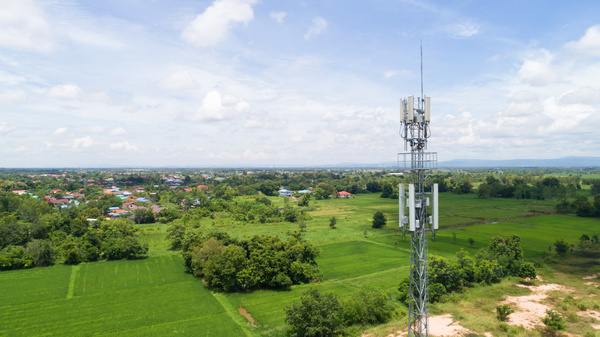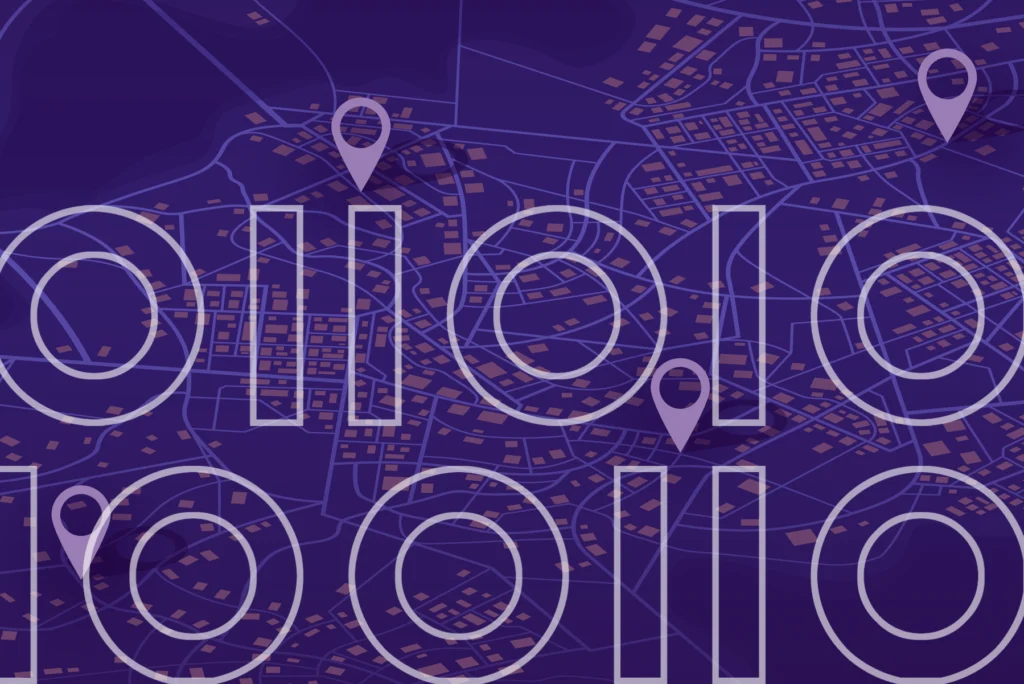Big data and artificial intelligence are undoubtedly hot topics these days. That’s no surprise, given the myriad of different use cases that enterprises are discovering for predictive analytics, AI, and machine learning. Business leaders are coming up with all kinds of ways to generate value from their data, developing better insights and automating tasks that might previously have seemed impractical or out of reach.
The most innovative enterprises are stepping beyond the bounds of internally managed data to generate substantially greater value, bringing depth and context to analytics with location intelligence (LI). By understanding the relationship between data and the geospatial context to which it pertains, businesses can unlock new possibilities for generating value, streamlining business processes, automating tasks, and developing keener, more accurate insights.
Here are some examples of how location intelligence can bring value to existing processes and workflows.
Market analysis and growth planning
Companies seeking to expand their market reach typically employ some manner of location-based analysis. Historically, that has been a relatively coarse-grained exercise, perhaps beginning with a collection of statistics related to consumer demographics, refined to a ZIP Code or census-block level. That might be overlaid with a map of known competitor locations and high-traffic commercial areas. From there, the element of human judgment took over, resulting in a reasonable estimate as to where the best opportunities for new locations might be.
Read our Report
Location Intelligence: The Data-Driven Paradigm Shift
Organizations are using location data more effectively and transitioning from collecting location coordinates to achieving location intelligence. To learn more about how the power of LI is driving innovation across all industries, download the Forbes Insights report.
When you consider what is possible by combining detailed location data with advanced analytics, it suddenly becomes possible to leverage a vast number of new data points. Not only can you understand the demographics of an area, but you can also see detailed demographic information about the visitors to a particular area, including when they visit, how long they stay, and which businesses they patronize.
For certain kinds of businesses especially, this information can be critical. Areas with highly transient daytime populations, such as busy downtown neighborhoods or office parks, might be suitable for a moderately upscale restaurant, even though the residential demographics of the area might indicate otherwise.
You can also discern considerably more about the competitive landscape. Location intelligence can tell you which companies are doing business in or near a target area and can even provide details as to the volume of business each competitor is doing. LI can give you traffic patterns and can help estimate footfall at specific locations.
Location intelligence + AI = new possibilities
Ultimately, AI brings a new dimension to the possibilities that are being opened up by location intelligence. AI is able to identify patterns and anomalies using hundreds or thousands of variables. It can identify potential hotspots where untapped opportunity exists, particularly in cases where more limited tools and methods are unable to do so.

For example, using location data and AI capabilities, telco companies can leverage existing network coverage data and subscriber information to discover potential lookalike customers to target for acquisition or to discover opportunities for offering new services to both new and existing customers. This information could also be used to optimize network investments, building out networks where there is a strong potential for growth.
Location intelligence and risk assessment
For some time now, the insurance industry has been using location intelligence to create a more refined model of risk assessment. Historically, insurance policies have been priced according to relatively high-level location information, such as the ZIP Code in which a person lives, and how far they must drive to work every day. That information would be used in assessing a policyholder’s overall risk profile, along with their driving history, age, and so on. For years, that was an acceptable approach, largely because there was no viable alternative.
In today’s world, though, new possibilities have emerged. With respect to the specific location of an auto policyholder, for example, you can determine whether or not they live on a busy road or a quiet side street. If they live on a corner, you can even determine whether their driveway opens onto a busy thoroughfare, or whether it abuts the less-traveled road that meets it at the corner. To develop a more refined risk model for the policyholder who lives there, the difference in those two scenarios is meaningful. The details about that specific location matter.
Other insurance use cases
In the insurance industry, the value of location intelligence goes much further than just risk assessment and pricing. Consider the impact of major weather events on policyholders across a local area, or even across a broad region. By developing a granular understanding of which properties are likely to be affected by severe events, insurers can get ahead of the problem, even preventing damage in some circumstances.
Advance notice of an impending hail storm, for example, might prompt an insurer to warn policyholders to park vehicles under cover. And as a severe weather event approaches, insurers can pre-position claims personnel in the areas most likely to be hard hit by the storm, resulting in faster service, promptly handled claims, and satisfied customers.
Predictive damage models can also help insurance companies ferret out potential cases of fraud. If predictive models tell you that a particular geographic area suffered relatively little damage, then high-dollar claims in that area might be singled out for investigation.
For enterprises seeking competitive advantage, location intelligence is already generating business value across multiple domains. As advanced analytics continue to mature and innovative companies discover new use cases for AI and machine learning, the combination of analytics with location intelligence holds tremendous promise for future value creation.
To learn more about how the power of LI is driving innovation across all industries, download the Forbes Insights report entitled Location Intelligence: The Data-Driven Paradigm Shift.







